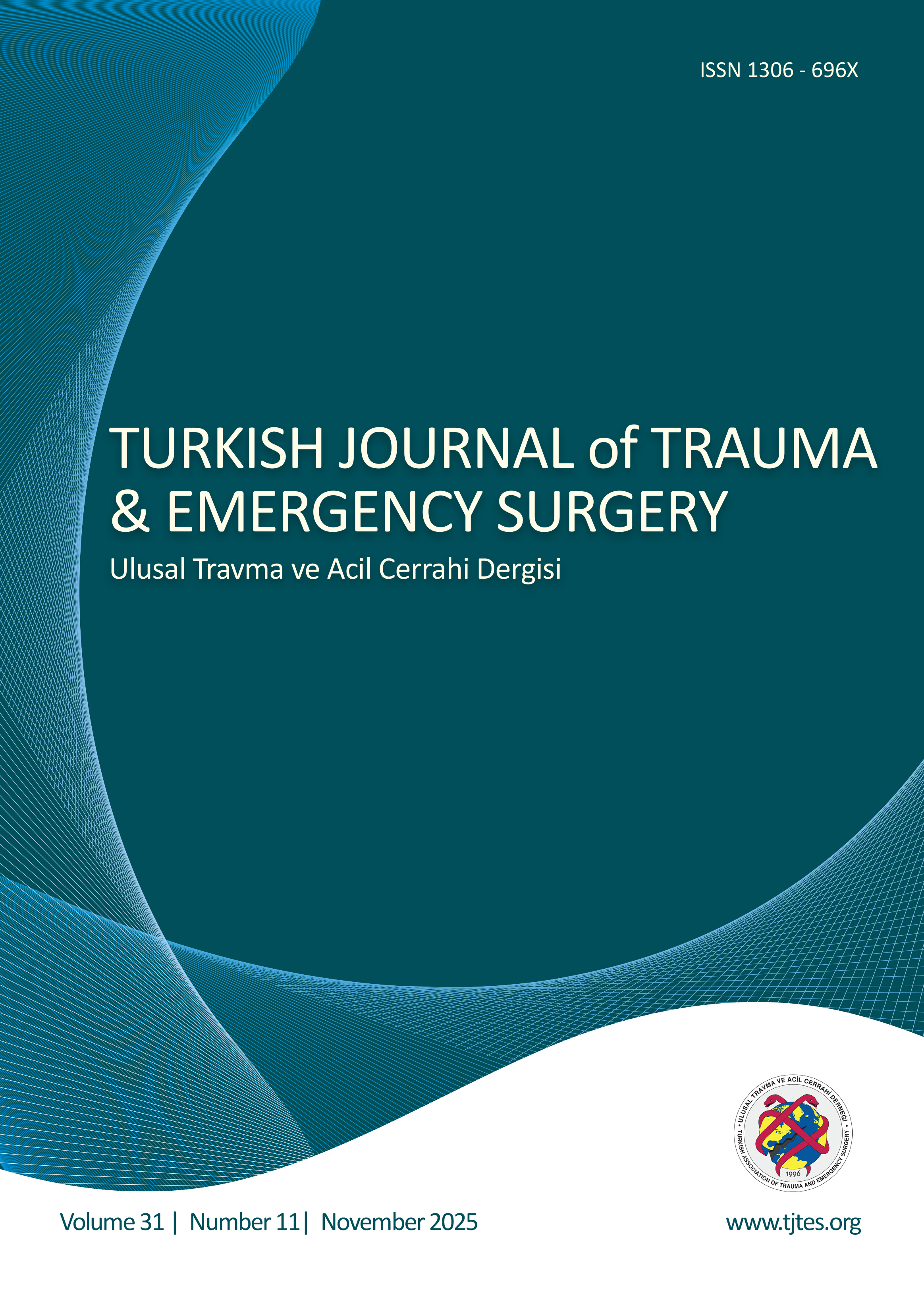Hızlı Arama
Acil serviste kalça kırığı tanısı alan hastalarda ultrasonografi ile perikapsüler sinir grubu bloğunun etkinliği
Birdal Güllüpınar1, Caner Sağlam1, Erden Erol Ünlüer1, Pınar Ayvat2, Kemal Öztürk3, Mehmet Gül3, Shikha Tandon41İzmir Bozyaka Eğitim ve Araştırma Hastanesi, Acil Tıp Kliniği, İzmir2İzmir Demokrasi Üniversitesi Tıp Fakültesi, Anastezi ve Reanimasyon Anabilim Dalı, İzmir
3Aksaray Üniversitesi Tıp Fakültesi, Acil Tıp Anabilim Dalı, Aksaray
4Parexel International Ltd. Chandigarh-India
AMAÇ: Kalça kırıkları acil serviste en sık görülen kırıklar arasında yer alır ve çok ağrılıdır. Perikapsüler sinir grubu bloğu (PENG), total kalça artrop-lastilerinde analjezi için geliştirilmiş yeni bir bölgesel anestezi tekniğidir. Acil serviste kalça kırığı olan hastada ağrıyı azaltmak için kullanılan PENG bloğunun etkinliğini belirlemeyi amaçladık.
GEREÇ VE YÖNTEM: Bu tek merkezli randomize ileriye yönelik çalışma acil serviste gerçekleştirildi. Çalışmaya alınan hastalar, işlemi yapacak per-sonelin uygunluğuna göre seçildi. Randomizasyon için kapalı zarf sistemi kullanıldı.
BULGULAR: Otuz dokuz hasta ile istatistiksel analiz yapıldı (PENG grubunda 18 hasta, kontrol grubunda 21 hasta). Hastaların 13ü (%33.3) kadın, 26sı (%66.7) erkekti. Ortalama yaş 75.3 idi. PENG grubunda işlem sonrası istirahatte 30. dakika, 2., 6. ve 24. saat hastaların ortalama NRS skorları 1.78±1.83, 0.00±0.00, 0.00±0.00 ve 1.28±1.41 idi. Kontrol grubunda ise sırasıyla 3.38±1.86, 0.05±0.22, 2.86±2.37 ve 4.95±1.47 idi. PENG gru-bunda bacağın 15° elevasyonunda 30. dakika, 2., 6. ve 24. saatte hastaların ortalama NRS skorları 3.06±1.80, 0.06±0.24, 0.22±0.43 ve 2.44±1.50 ve 5.24±. Kontrol grubunda ise sırasıyla 1.81, 1.05±0.92, 4.29±2.35 ve 7.14±1.24.
TARTIŞMA: PENG blok kalça kırığı olan hastalarda pratik bir seçenek olarak ağrıyı ve sistemik analjezik ihtiyacını azaltabilir.
Anahtar Kelimeler: Acil uzmanı, kalça kırığı, PENG bloğu, ultrasonografi.
Effectiveness of pericapsular nerve group block with ultrasonography in patients diagnosed with hip fracture in the emergency department
Birdal Güllüpınar1, Caner Sağlam1, Erden Erol Ünlüer1, Pınar Ayvat2, Kemal Öztürk3, Mehmet Gül3, Shikha Tandon41Department of Emergency Medicine, İzmir Bozyaka Training and Resarch Hospital, İzmir-Turkey2Department of Anesthesiology and Reanimation, İzmir Democracy University Faculty of Medicine, İzmir-Turkey
3Department of Emergency Medicine, Aksaray University Faculty of Medicine, Aksaray-Turkey
4Parexel International Ltd. Chandigarh-India
BACKGROUND: Hip fractures (HF) are among the most common fractures present in the emergency department and are very painful. Pericapsular nerve group block (PENG) is a new regional anesthesia technique developed for analgesia in total hip arthroplas-ties. We aimed to determine the effectiveness of PENG block used to reduce pain in patients with HF in the emergency department.
METHODS: This single-center, randomized, and prospective study was carried out in the emergency department. The patients in-cluded in the study were selected according to the suitability of the personnel who will perform the procedure. The sealed envelope system was used for randomization.
RESULTS: Statistical analysis was performed with 39 patients (18 patients in the PENG group, 21 patients in the control group). Thir-teen (33.3%) of the patients were female and 26 (66.7%) were male. The mean age was 75.3. At rest post-procedure, the mean Numeric Rating Scale (NRS) scores of the patients at the 30th min, 2nd, 6th, and 24th h were 1.78±1.83, 0.00±0.00, 0.00±0.00, and 1.28±1.41 in the PENG group. On the other hand, it was 3.38±1.86, 0.05±0.22, 2.86±2.37, and 4.95±1.47 in the control group, respectively. The mean NRS scores of the patients at 15° elevation of the leg at the 30th min, 2nd, 6th, and 24th h were 3.06±1.80, 0.06±0.24, 0.22±0.43, and 2.44±1.50 in the PENG group and it was 5.24±1.81, 1.05±0.92, 4.29±2.35, and 7.14±1.24 in the control group, respectively.
CONCLUSION: PENG block can reduce pain and the need for systemic analgesics as a practical option in patients with HF.
Keywords: Emergency physician, hip fracture, pericapsular nerve group block, ultrasonography.
Makale Dili: İngilizce





